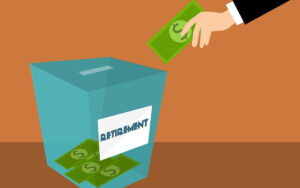What Is Dividend Yield?
Let’s say you plant a tree in your yard to add beauty to your view and value to your home. And maybe you choose a tree that bears fruit to give you an epicurean delight in addition to that beauty and value.
In other words, certain trees may put a cherry on top of your landscaping investment. And that’s a little like investing in a stock that pays dividends.
Growth and a Little Something Extra
A dividend is a portion of a company’s earnings paid out in cash (or stock) to shareholders on a per-share basis. Most dividends are paid in cash, and many are distributed quarterly (although some companies offer monthly dividends).
Why do some companies pay dividends? Think of dividends as incentives to reward shareholders and attract new investors. Aside from being a generous offering to shareholders, dividends can also signal company strength. (Under certain circumstances, dividends can also indicate company weakness. We’ll get into this a little later.)
A long-term dividend investor’s goal is to increase the total value of portfolio returns by accumulating dividend payments in addition to growth. But how much might a single dividend stock yield on an annual basis? What makes one dividend yield more competitive than another? What is dividend yield?
What Is Dividend Yield?
Here’s a simple dividend yield definition: The dividend yield is the ratio of a company’s annual dividend payment in relation to its stock price. In other words, dividend yield tells you what percentage of a stock’s price (per share) you may receive as a dividend payment.
To make this more clear, let’s look at how dividend yield is calculated:
Dividend yield = annual dividend ÷ stock price
Say company XYZ offers an annual dividend of $0.50 per share, and its stock is trading at $20. If you divide the annual dividend of $0.50 by the stock price of $20, you get a dividend yield of 0.025, or 2.5%.
Looking to reinvest dividends? Consider a DRIP
Simple enough. But there are a few things that can make this a little tricky. For example, what if you don’t know a company’s annual dividend? All you may know is the current dividend payout rate.
One way to estimate a company’s annual dividend is to take the current dividend and multiply it by the number of periods in which dividends are paid. So if dividends are paid quarterly, then multiply the current dividend by four. If it’s paid monthly, multiply by 12. This should give you a quick estimation or projection of what a company’s annual dividend might be.
It’s important to understand that changes in a stock’s price can raise or lower dividend yield. For example:
- If company XYZ pays an annual dividend of $0.50 per share and its stock is trading at $20, then its dividend yield is 2.5% (0.50 ÷ 20 = 0.025).
- Say XYZ’s stock price dramatically increases to $30 per share while maintaining a $0.50 dividend payout. Its dividend yield will then go down to 1.6% (0.50 ÷ 30 = 0.016).
- Now, imagine the opposite—XYZ’s stock loses half its value to trade at $10 per share. If the company maintains its $0.50 dividend, then its dividend yield would rise to 5% (0.50 ÷ 10 = 0.05). That’s double the original yield of 2.5%, but it’s not necessarily good news.
Dividend Yield and Company Health
For many dividend investors, high-paying dividends may seem attractive. They can be, but you might want to ask why a company’s dividend is high before buying the stock.
- A company may raise its dividend as its stock value increases to keep its dividend yield competitive. This might be seen as a sign of strong earnings, abundance of capital, and overall company strength.
- If a company’s stock price declines sharply, its dividend yield may automatically increase if it maintains its current dividend. But this can signal something of a value trap, because the company lost a lot of market cap as its share price declined.
- Another thing to watch out for are companies that tap into debt to maintain their dividend payments—a potential negative sign that their cash flow may be trickling.
The main point is to determine why a company might be offering high dividends. Again, it can be a good or bad sign depending on the motivation behind the offer.
Where to Find Dividend-Yielding Investments
Because dividends are, by definition, a portion of company earnings, buying stocks can be the most direct way to receive dividends. But if you don’t want to go the direct route, you can also find exchange-traded funds (ETFs) or mutual funds that invest heavily in dividend stocks. Alternatively, Real Estate Investment Trusts (REITs) and Master Limited Partnerships (MLPs) can also provide high dividend yields, in some cases higher than stocks.
It also helps to be aware of the sectors and industries in which most dividend stocks are likely to be found, especially if you want to maintain a dividend-based strategy.
Be Aware of the Risks
Don’t forget that a dividend is like a supplementary bonus to a stock’s growth. If a stock’s value declines, it will likely affect your overall returns, despite any gains you’ve made by accumulating dividend payments.
Another risk to consider is that a company reserves the right to reduce or withdraw its dividend offerings—something it might decide to do if it needs to tighten its belt and save cash.
Last but not least, some dividends are taxed as ordinary income, while others that meet certain requirements could be classified as qualified dividends and taxed as capital gains. Talk to your tax professional to see how this may impact your overall portfolio returns.
The Bottom Line
A long-term dividend strategy can be a fruitful approach to investing for the long haul. Just be aware that it’s about the quality of the dividend, not the quantity of its offering. A higher dividend yield may or may not be favorable to your investment goals and risk tolerance.


